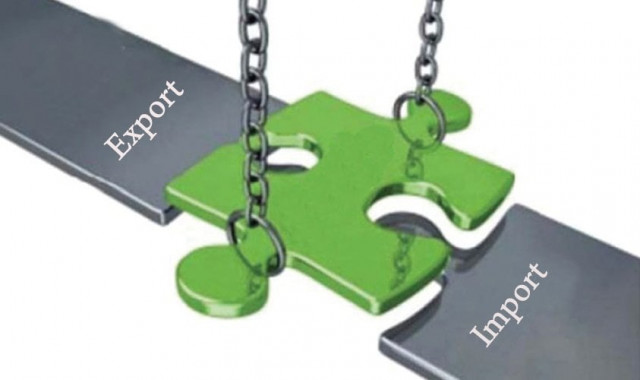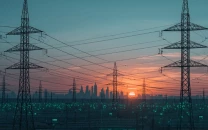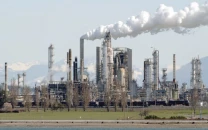First half: Trade deficit widens 34% as exports fail to pick up pace
Imports continue to record double-digit growth, hitting $24.2 billion.

Forecast: $17.2b is the trade deficit projected by the government for the current fiscal year. STOCK IMAGE
Pakistan’s trade deficit widened 34% to $12.1 billion in the first half of fiscal year 2014-15 on the back of a fall in exports and a persistent double-digit growth in imports, indicating slim chances of building foreign currency reserves through non-debt creating instruments.
The July-December trade gap also beat the International Monetary Fund’s (IMF) expectations that had projected a deficit of $10.5 billion for the period. In the first six months of previous fiscal year, the deficit stood at $9.05 billion.

Exports contracted 4.3% in July-December this fiscal year, totalling $12.07 billion, showed figures released by the Pakistan Bureau of Statistics (PBS) on Friday. The receipts were $544 million less than the exports made in the same period of previous year.
Contrary to the decline in exports, the import bill rose to $24.2 billion, an increase of $2.53 billion or 11.7% over imports in the first half of previous year. The IMF had projected that imports would rise to $22.7 billion in the first half, an assessment that stood lower by $1.5 billion.
The weakening exports reflect the impact of domestic energy crisis and a slowing global economy, factors that have reduced the country’s chances of building foreign currency reserves through non-debt creating instruments.

The IMF has suggested that the State Bank of Pakistan’s (SBP) gross official reserves should grow to $14.16 billion by the end of the fiscal year in June. For the first half, it had estimated gross SBP reserves at $10.95 billion, which was also missed by the central bank. On January 2, the reserves stood at $10.47 billion.
The government has so far been able to add to the reserves by raising an expensive $3 billion from international debt markets, getting a $1.5-billion grant from Saudi Arabia and seeking IMF loans.
The widening trade deficit indicates that the current account deficit – the gap between external receipts and payments – will be far higher than the budgeted $2.8 billion or 1.1% of gross domestic product, suggests an economist working with a government agency.
Independent analysts point out the government has started facing difficulties in attracting foreign loans and the higher trade deficit will eat up some of the foreign currency reserves of the SBP.

The national planners have projected a 5.8% growth in exports and a 6.2% rise in imports in the current fiscal year. Imports are expected to reach $44.2 billion whereas exports are likely to hit $26.99 billion, with a trade deficit of $17.2 billion.
Contrary to these projections, the IMF sees only a 1% increase in exports and a 6% growth in imports.
December statistics
The trade figures for December also portray a similar picture. In the month, the deficit soared 31% to $1.7 billion year-on-year, according to the PBS.
Against $2.26 billion worth of exports in December 2013, the receipts were $2.15 billion in December 2014, a contraction of 4.7%. However, imports grew to $3.85 billion, higher by 8.4% over imports in the same month of previous fiscal year.
Month-on-month changes
The trade deficit widened slightly by 2.4% in December over November because of around 10% growth in exports and 6.3% rise in imports, showed the PBS data.
Published in The Express Tribune, January 10th, 2015.
Like Business on Facebook, follow @TribuneBiz on Twitter to stay informed and join in the conversation.



















COMMENTS
Comments are moderated and generally will be posted if they are on-topic and not abusive.
For more information, please see our Comments FAQ